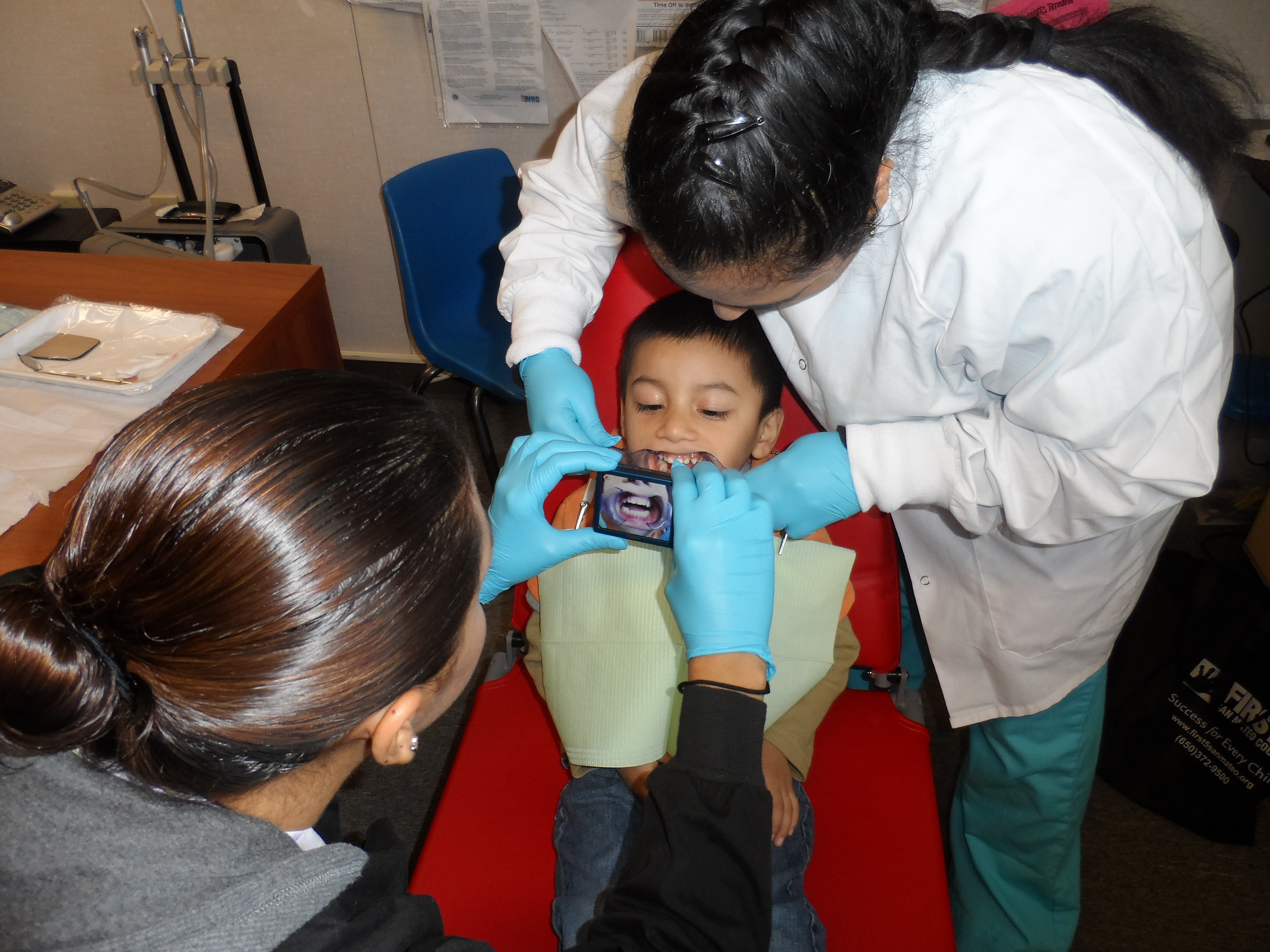

Three-year old Christopher Chacon got his teeth cleaned, treated with fluoride and x-rayed in a corner of the administrative office at Magnolia Head Start Pre-School in Palo Alto.
Many children at the preschool may have a dentist, but they don’t go regularly. They show up when they have pain, said registered dental hygienist Ushma Patel. So she and dental assistant Leslie Estrada go to them to offer and encourage preventative care.
They visit six sites in the county and sometimes treat more than half the class.
Patel works for Ravenswood Family Dentistry, which serves low-income and uninsured residents in San Mateo County, and is one of 11 organizations taking part in a telehealth initiative called the Virtual Dental Home Demonstration Project.
The project provides dental care to more than 2,000 people in California, including low-income children at school, people with disabilities and elderly people at residential care facilities.
The Pacific Center for Special Care, part of the University of the Pacific’s school of dentistry in San Francisco, operates the project. They hope to eventually improve oral health for underserved people nationally.
The project is giving dental care their clients would not otherwise get, said Dr. Paul Glassman, director of the Pacific Center for Special Care and a professor of dental practice at UOP.
Registered dental hygienists and registered dental assistants go into schools, nursing homes and residential facilities for people with disabilities. They bring portable imaging equipment for x-rays and photographs, supplies to do temporary fillings and an internet-based dental record system. They upload images and dental and medical histories to a website where a dentist reviews them and creates a treatment plan or refers patients requiring more complex treatment to a dentist.
Yogita Thakur, Dental Director at Ravenswood, sees education as one of the major goals of the project.
“Perceived need is the number one reason people seek care or don’t seek care,” she said. If people believe dental caries is preventable, they will seek preventative care, if they think they’ll get cavities no matter what, they won’t seek care, she said. “It’s about educating the parents.”
Carmella Gutierrez, President of Californians for Patient Care, noted that more than a quarter of children ages two through five and half of children ages 12 to15 have had tooth decay, which can be linked to poor digestion and heart and respiratory disease.
“Having dental care is linked to overall health,” she said.
The CDC reports that tooth decay affects children in the U.S. more than any other chronic infectious disease. Yet in 2011, only 27 percent of children eligible for Medi-Cal received dental care, down from 34 percent in 2009. Those figures come from California Medicaid Management Information Services and are cited by Glassman and others in the July 2012 issue of the California Dental Association Journal.
The goal of the project is to show that hygienists and their assistants can keep many people healthy by providing education, assessments of dental disease risk, cleanings, fluoride varnishes and dental sealants.
Results from the project sites so far show that about 50 percent of participating patients can be kept healthy by a dental hygienist. The other half are being referred to dentists for more complex treatment, Glassman said.
“I think it’s a tremendous advance,” Glassman said. “You’re talking about a population that doesn’t get dental care.”
Even if all the research points to the prudency of moving virtual dental homes into mainstream dentistry, many challenges remain, Glassman said. The way we pay for dental care and the laws governing telehealth are designed for our current system, which pays for procedures and dental visits.
“Making the population healthier is not what our current compensation systems are based on,” he said.
That’s the next phase of the Virtual Dental Home Demonstration Project. In the next couple of months Glassman anticipates potential funding for designing a health outcomes-based payment system that the Medicaid program could use. Dental providers would be compensated based on the health of their patients, not the number of procedures they perform.
Glassman said the main goal of the project is the same as the overall healthcare reform movement in the U.S.: better patient experiences, better health and lower costs.
“We’re going after the same thing in dental care reform,” he said.






You must be logged in to post a comment.